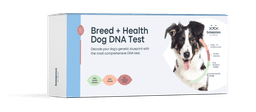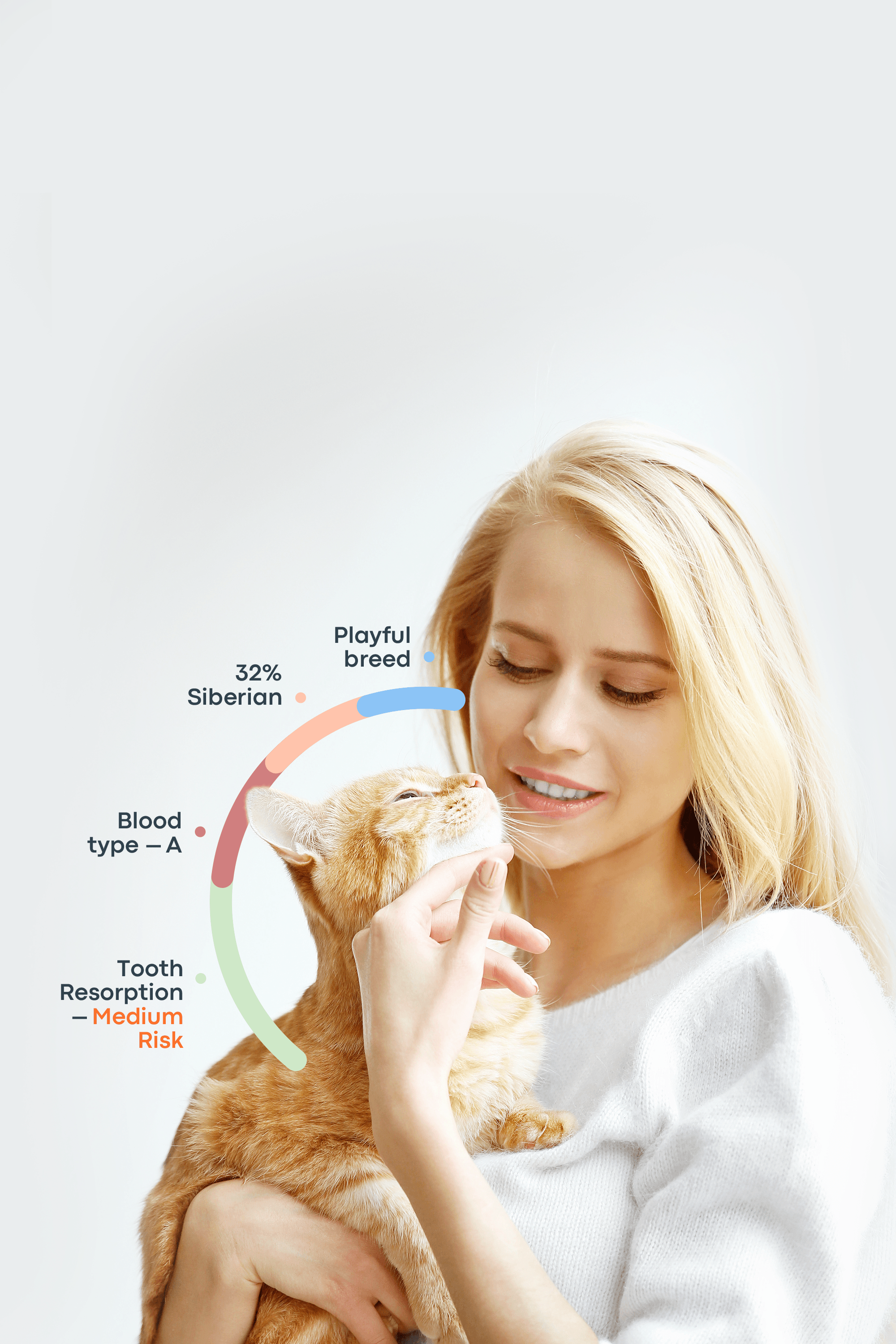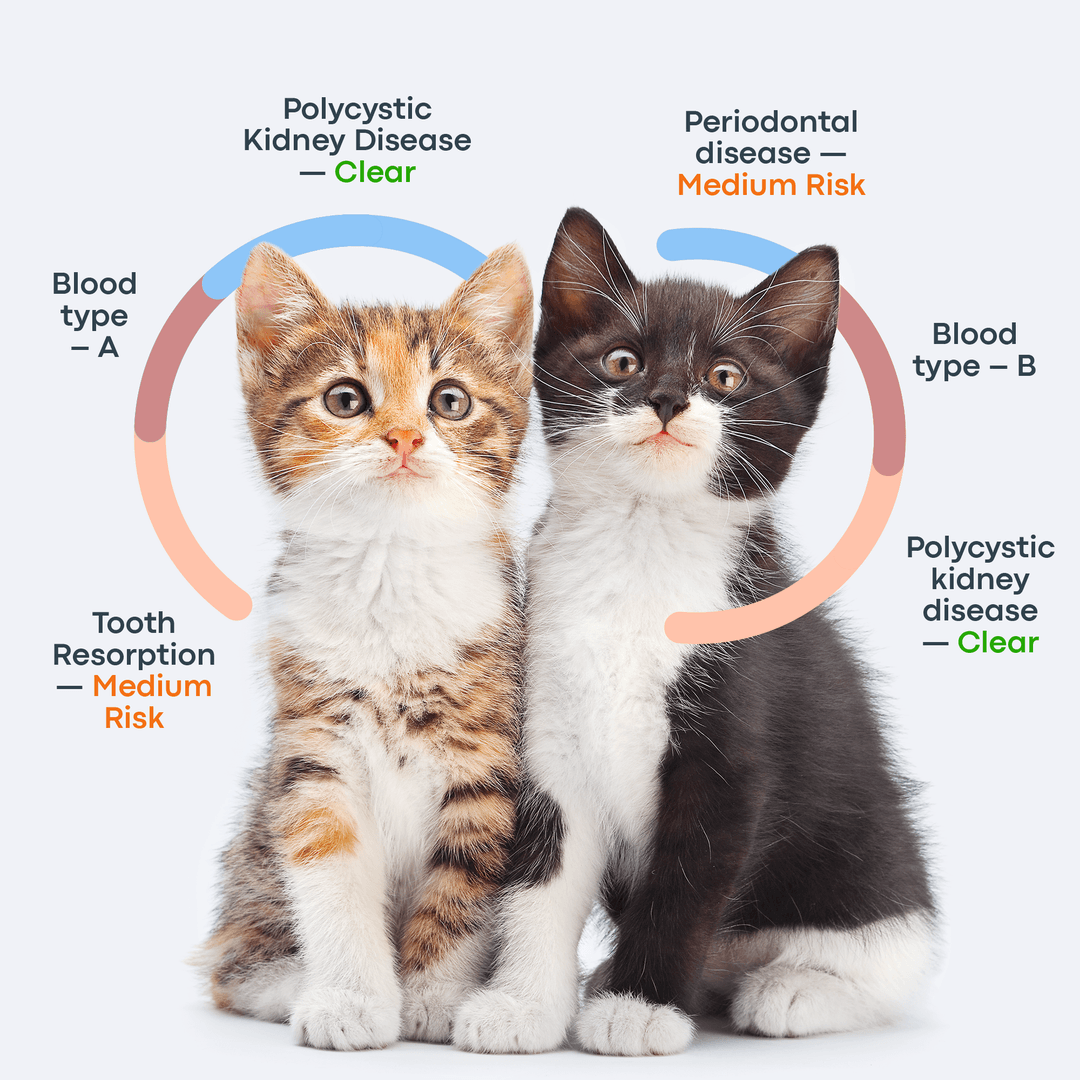It can be alarming when a dog that normally has a healthy appetite suddenly stops eating. Most dogs enjoy their meals, so a sudden disinterest in food may point to an emotional, physical, or environmental issue.
Common causes of appetite loss (or anorexia) in dogs include dental problems, pain from an underlying illness or infection, changes in food, lack of physical or mental stimulation, and emotional stress or anxiety. These causes can range from mild to serious, so it’s important for pet parents to respond appropriately.
This guide will help you get to the bottom of the question, “Why won’t my dog eat?” so you can identify the underlying cause and take the right steps to support your pet’s health.
Why Won’t My Dog Eat? Terms and Timeline
To find out the answer to the question, “Why is my dog not eating food?”, it’s helpful to first clarify a few important terms:
Anorexia (True Anorexia)
Canine anorexia refers to a complete or partial loss of appetite where the dog shows little or no interest in eating. This can be triggered by physical illness, psychological or behavioral issues, environmental changes, or emotional distress.
Hyporexia
In hyporexia, the dog has a reduced appetite but may still eat a little food. The condition could occur due to physical, emotional, or environmental issues. This could be the answer to the question, “Why is my dog not eating his food but will eat treats?”
Pseudoanorexia
According to the experts at VCA Hospitals, pseudoanorexia differs from true anorexia in that the dog wants to eat but is physically unable to do so due to pain or difficulty with chewing or picking up food. Common causes include inflammation of the gums or oral tissues, abscesses or masses behind the eye, pain in the jaw or chewing muscles, neurological disorders, and salivary gland disease.

How Long Can a Dog Go Without Food
How long a dog can go without eating depends on their age and overall health. Most dogs can survive without food for three to five days, but the experts at PetMD recommend taking the dog to the vet if they have not eaten for more than 48 hours, even if they are acting normal.
Ideally, puppies should not go without food for over 24 hours, and adult dogs – for over 48 hours. If a dog has diabetes, they should have a consistent feeding schedule of three to four meals per day with insulin administered as recommended by the vet. If your diabetic dog refuses to eat, please take them to the vet right away.
When not eating becomes an emergency
Dog Age and Health | Max. Time Without Food | Notes |
Puppies under 6 months | 12-24 hours max | High risk of hypoglycemia; see a vet if the puppy has skipped more than one meal |
Adult dog | 3-5 days | Most dogs can tolerate short fasting periods. But please see the vet after 48 hours |
Senior dog over 7 years | 24-48 hours | Watch out for other symptoms; it could be due to an underlying health issue. See the vet after 48 hours |
Diabetic dog | Should not skip even one meal due to the risk of insulin imbalance | Contact the vet right away. |
Dogs with chronic health issues | Varies depending on the health issue | Consult your vet, especially if the dog has a liver, kidney, or heart-related ailment. |
Medical Reasons Why Your Dog May Not Be Eating
Here are a few answers to “Why won’t my dog eat?”
Medical Issues
A wide range of medical conditions can lead to a reduced appetite or complete refusal to eat in dogs. Here are some of the most common causes:
Gastrointestinal Issues: These may include anything from mild stomach upset or constipation to more serious conditions like parvovirus, inflammatory bowel disease (IBD), gastritis, or stomach ulcers.
Gastrointestinal Obstruction: Dogs that swallow non-food objects (such as toys, balls, or bones) can develop a blockage in the GI tract, leading to pain, vomiting, and refusal to eat.
Chronic Conditions: Diseases like kidney or liver disease, pancreatitis, hepatitis, or kidney failure can lead to nausea and appetite loss.
Dental Disease: Issues such as periodontal disease, gingivitis, or broken/fractured teeth can make chewing painful, resulting in anorexia, hyporexia, or pseudoanorexia.
Tumors or Cancer: Any type of tumor — whether benign or malignant — can cause systemic illness and appetite changes in dogs.
Orthopedic Problems: Conditions like arthritis or hip dysplasia may cause chronic pain, leading to a lack of interest in food.
Medications or Toxins: Some prescription or over-the-counter medications, such as NSAIDs, antibiotics, or chemotherapy drugs, may cause side effects like nausea or vomiting, which can suppress appetite. Likewise, ingesting toxic substances can result in anorexia and requires immediate veterinary attention.
Behavioral and Emotional Causes
According to experts, not all causes of reduced appetite are physical— behavioral and emotional factors can significantly affect a dog’s eating habits. In many cases, dogs with hyporexia (reduced appetite) are responding to stressors or psychological changes.
Anxiety and Stress: Dogs suffering from anxiety disorders may develop specific food aversions or preferences, which can lead to reduced intake. Loud noises (such as thunderstorms, fireworks, or construction), visitors, or separation anxiety can all suppress a dog’s appetite.
Environmental or Routine Changes: Dogs thrive on routine, and any disruption — such as moving to a new home, traveling, changing feeding times, or the addition of a new pet or baby — can cause anxiety. Newly rehomed dogs, in particular, may refuse to eat for several days as they adjust to unfamiliar sights, sounds, and smells.
Grief: Dogs can grieve the loss of a human or animal companion. According to the Companion Animal Mourning Project by the ASPCA, about 11% of dogs that lost a companion showed signs of mourning, including refusal to eat.
Age-Related Factors: Older dogs may experience changes in metabolism, a diminished sense of smell and taste, or simply a lower caloric requirement, all of which can contribute to decreased interest in food.
Issues With the Food Itself

Sometimes, a dog’s refusal to eat is linked not to illness or behavior, but to dietary choices or environmental factors. These are often easy to overlook but can play a significant role in your dog’s eating habits.
Spoiled or Expired Food:
Dogs have a strong sense of smell and may refuse to eat food that’s spoiled or expired. Mold, parasites, or foul odors in old food can cause nausea, vomiting, and diarrhea, and may even result in a lasting aversion to that particular food.
Sudden Change in Food:
Switching your dog’s food brand or formula too quickly — without a gradual transition — can lead to digestive upset, especially in sensitive dogs. This may cause them to reject the new food entirely.
Texture or Temperature Preferences:
Dogs with dental issues may prefer softer foods, while those with digestive discomfort might favor bland options. Additionally, warmed food often smells and tastes more appealing to picky eaters. You could check with your vet about the best dog food for picky eaters.
Dirty Food or Water Bowls:
Bacteria and mold can accumulate in unwashed bowls, leading to stomach upset or even food poisoning. A foul-smelling bowl can also turn a dog off their food entirely.
Too Many Treats or Table Scraps:
Dogs that are overfed with high-calorie treats or human food may lose interest in their regular meals. This is usually the reason why a healthy dog won’t eat.
Checklist: Quick Tips to Keep Mealtime Safe and Appealing
✅ Always check the expiration date on dog food.
✅ Smell the kibble — discard it if it smells off or rancid.
✅ Wash and disinfect food and water bowls daily.
✅ Review your dog’s treat intake — limit high-calorie snacks and avoid table scraps.
✅ Use low-calorie treats for training and avoid feeding between meals.
When to See a Veterinarian
While it’s normal for healthy dogs to occasionally skip a meal or two — especially in hot weather or during mild digestive discomfort — extended fasting or refusal to eat can be a sign of something serious. If your dog hasn’t eaten in more than 48 hours, or has underlying health conditions, it’s time to consult your veterinarian.
Here are some urgent red flags to look out for when a dog not eating:
Urgent red flags
Complete refusal to eat for several days
Sudden or unexplained weight loss
Persistent vomiting or diarrhea. A single episode of diarrhea may not be concerning, but ongoing symptoms could signal serious conditions like parvovirus, distemper, pancreatitis, or diabetes. Repeated vomiting may also be linked to kidney, liver, or neurological disease.
Vomiting combined with staggering, weakness, or disorientation. This may indicate poisoning or toxic ingestion— contact your vet immediately.
Lethargy or extreme fatigue along with reduced appetite
Pale gums, which can point to anemia, internal bleeding, or blood clotting disorders
High-risk dogs
Puppies: Young dogs are especially fragile. Appetite loss may be due to serious infections like distemper, parvovirus, or whipworms. If a puppy skips more than two meals, seek veterinary attention immediately.
Diabetic Dogs: Dogs with diabetes must maintain a consistent meal schedule to manage blood sugar levels. They typically require three to four meals daily, along with prescribed insulin. If a diabetic dog skips even one meal, call your vet right away.
Senior Dogs (7+ years): Older dogs, especially those with chronic illnesses such as kidney or liver disease, should not miss meals. A loss of appetite in senior dogs can quickly escalate into a medical emergency.
What You Can Do at Home
Walk Your Dog Before Mealtime
Walking your dog before their mealtime can be beneficial in several ways. It can help whet their appetite so they are hungry and less picky. Moreover, it can help them eat more calmly instead of gorging on the food too quickly. So, if you find yourself thinking, “Why my dog won’t eat?” then they may simply need a bit more exercise than they are getting.
Improve the Appeal of the Food
Warm Up the Food
Cold or dry food might be unappetizing to some dogs. Try mixing kibble with warm water or low-sodium chicken broth. Warming up food can enhance its smell and flavor, making it more tempting—especially for picky eaters.
Add Toppers
Add flavor and moisture by incorporating bone broth, plain yogurt, wet food, or store-bought dog food toppers. These additions can make meals more enjoyable and nutritious.
Try Different Textures or Flavors
Some dogs have strong texture or flavor preferences. Try switching between wet, dry, or homemade food. You can also test different proteins (like chicken, lamb, or fish). Make any changes gradually to avoid upsetting your dog’s stomach.
Make Mealtime Engaging
Use Food Puzzles or Enrichment Toys
Puzzle feeders, like those by Nina Ottosson, or snuffle mats can stimulate your dog mentally and physically, turning mealtime into a fun game that encourages eating.
Try Hand-Feeding
Hand-feeding can be especially helpful for nervous, shy, or recovering dogs. It fosters trust and positive associations with food.
Create a Calm Feeding Environment
Reduce Mealtime Stress
Dogs eat best in a quiet, low-stress environment. If you have multiple pets, try feeding them in separate rooms to avoid competition or tension. You can also use pet-safe essential oils (like lavender, chamomile, or frankincense) in a diffuser to help ease anxiety.
Stick to a Consistent Feeding Schedule
Feed your dog at the same times every day — e.g., 8 a.m. and 6 p.m. A predictable routine builds anticipation for meals and discourages begging or overeating between meals.
Ensure Bowl Hygiene and Comfort
Keep Bowls Clean
Wash your dog’s food and water bowls daily. Dirty bowls can harbor bacteria or develop unpleasant odors that may discourage eating. Avoid plastic bowls, which tend to retain odors — opt for stainless steel or ceramic instead.
Use the Right Type of Bowl
For senior dogs or large breeds, use elevated bowls to reduce strain on joints.
For puppies or short-nosed breeds (like pugs or bulldogs), use shallow dishes for easier access.

Conclusion: Stay Calm, Stay Observant
A dog’s loss of appetite is often temporary, so try not to overreact. Making a big deal out of feeding can unintentionally turn it into a bigger issue. Remember, dogs are individuals. Just like people, they have different metabolisms, hunger levels, and attitudes toward food. Some are enthusiastic eaters who devour everything, while others have smaller appetites and may occasionally skip meals.
That said, a noticeable or prolonged loss of appetite should never be ignored, even in otherwise healthy dogs. Always consider the bigger picture. The underlying cause may be medical, behavioral, or environmental. If your dog’s eating habits don’t return to normal or if other symptoms appear, consult your veterinarian. They can help you get to the root of the issue and guide you toward the right solution.
Frequently Asked Questions
Why is my dog not interested in food?
Watch out for other signs and symptoms. Try a different dog food or add some food toppers. If your dog is still not eating after 48 hours, please see your vet.
What medicine for a dog not eating?
Depending on the cause behind your dog’s anorexia, your vet can prescribe some anti-nausea medicine, a multivitamin supplement, or an appetite stimulant like mirtazapine.
How long can a dog go without eating?
Most dogs can live without food for three to five days.
My dog's stomach is gurgling like crazy, and they won't eat. What should I do?
Many reasons cause a dog’s stomach to grumble. The main reason is a buildup of gas and fluids. This may be due to hunger, food poisoning, an upset stomach, or some other health issue. Try feeding them a bland diet of rice and chicken broth. If symptoms persist, please see your vet.
How can I prevent my dog from not eating?
Preventing a dog from not eating involves maintaining a consistent feeding schedule, providing a balanced and nutritious diet, minimizing stressors during mealtime, and seeking veterinary advice for any persistent appetite issues.
When should I go to the vet if my dog isn’t eating?
If your dog refuses to eat for more than 24 hours or if the loss of appetite is accompanied by other concerning symptoms such as lethargy, vomiting, or behavioral changes, it's advisable to seek prompt veterinary attention.
My dog is vomiting yellow bile and not eating - what to do?
Vomiting yellow bile and a loss of appetite may indicate various underlying issues, including gastritis or gastrointestinal problems. It's crucial to consult with a veterinarian promptly to determine the cause and appropriate treatment for your dog's specific condition.



